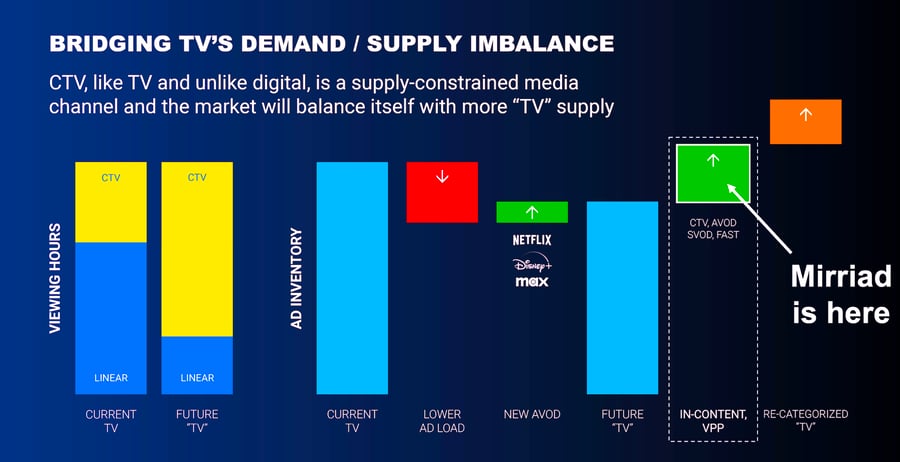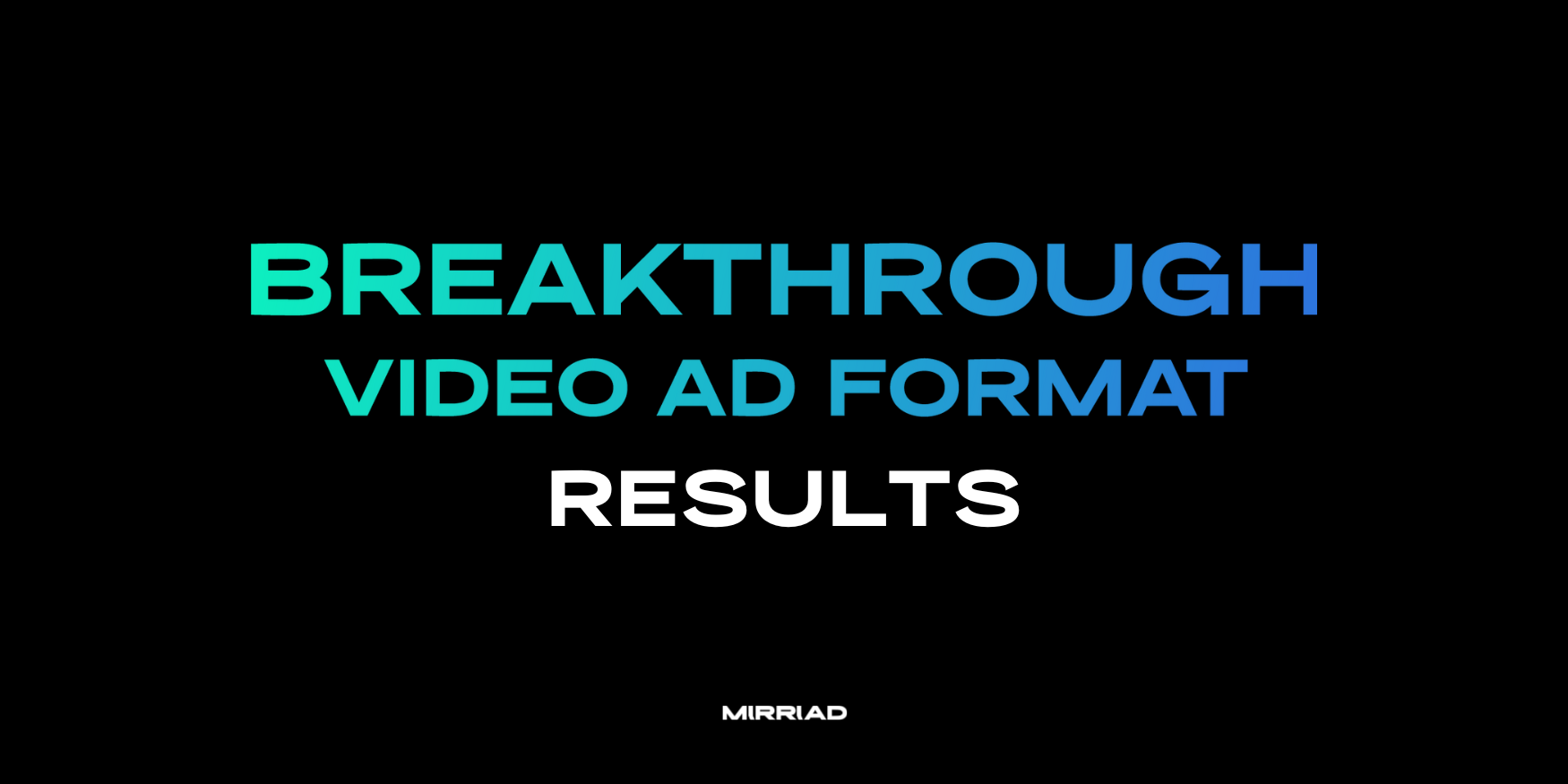This article was written by Stephan Beringer, CEO at Mirriad.
TV inventory is shrinking fast, creating a significant supply constraint.
In this market, the importance of Mirriad’s in-content solutions for publishers and advertisers is greater than ever, delivering top-tier advertising inventory at scale and captive audiences against high quality and brand-safe TV, CTV, streaming and video content.
Declining Viewership Squeezes Inventory Availability
The number of households that have linear TV will drop to 73.2 million in 2024 from nearly 100 million in 2015 as they adopt CTV and digital video as preferred viewing channels. What’s more, the amount of time people spend watching linear shows is eroding fast, especially in younger households.
On the flipside, the number of Connected TV (CTV) households is growing fast. In 2024, they’ll more than double that of linear. Digital viewership is also massive. More than 75% of US adults spend two hours or more per day watching video content across different devices.
Advertisers will adapt to the massive shift in the way consumers watch content. The new forms of media don’t offer a perfect one-for-one replacement for traditional TV ad inventory. Some people pay a subscription to avoid ads, ads are skipped and blocked wherever possible, and attention is at an all-time low.
Together, these factors point to the value of finding advertising opportunities that capture viewer attention, can live across formats, and aren’t skipped. In-content advertising solves for these challenges.
How Mirriad’s in-content advertising solves the ad inventory challenge for publishers
In-content advertising creates an entirely new inventory channel within the content itself. Mirriad delivers 100% in context at scale with a high relevance that captures attention. With between 6 to 12 new ads available per hour of content, Mirriad opens a new opportunity to deliver higher performance with an ad format that 80% of viewers like and prefer 7x over traditional TV ads. In-content is such an enormous opportunity that we forecast it to explode as a category, estimated to be above $2 Bn by 2026 based on industry data and Mirriad models.
In-content advertising doesn’t exist in a vacuum. As new data from Kantar has shown, there is a direct correlation between positive ad experiences and consumption, a phenomenon that increases significantly when in-content advertising is introduced. Because 75% of viewers like the in-content ad format, Mirriad drives an 18% increase in Purchase Intent, which in turn results in a 35% increase in purchase of the featured products after exposure.
How Mirriad solves the ad inventory challenge for advertisers
In-content advertising from Mirriad solves for a number of issues that advertisers face as they address the TV inventory constraint challenge.
Contextual relevance: TV and video ad placements rely heavily on contextual alignment with the content. Mirriad’s in-content advertising solution follows this approach and builds on it. Ads are displayed in the right content and context, augmenting a brand’s relevance and increasing the chances of capturing users' attention, all resulting in improved ad effectiveness.
Enhanced viewability: Virtual product placement improves ad viewability by integrating ads seamlessly within the content itself - where there is a captive audience.
Targeted audience reach: Mirriad has access to detailed audience insights and data, which allows us to identify and target specific demographics, interests or behaviors, to help brands reach their audience effectively.
Proven performance: With detailed analytics and performance metrics, advertisers can measure the effectiveness and ROI of their ad placements. This allows advertisers to make data-driven decisions, gain insights into audience engagement, brand exposure and conversion rates and enables future campaigns to be optimized for a long-term positive gain in performance.



.png)